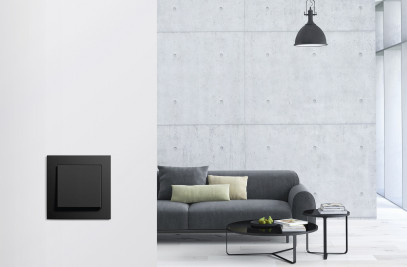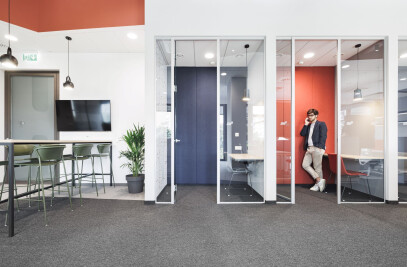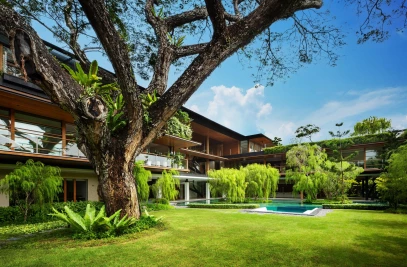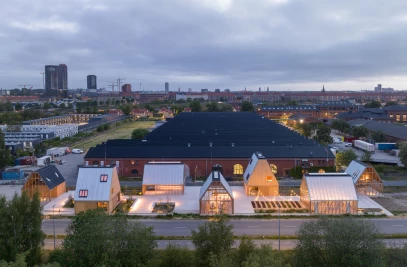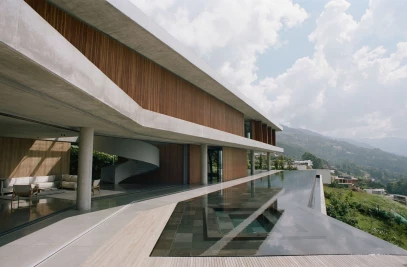An Archello Awards 2023 Finalist, the Pikes Peak Summit Visitor Center by GWWO Architects (design architect) and RTA Architects (architect of record) responds to its breathtaking surroundings by preserving viewsheds, treading lightly on the land, and emphasizing environmental protection. Situated in the grand mountains of Colorado at an elevation of 14,155 feet (4314 m), it is the highest visitor center in the world and, as such, required careful, meticulous design planning and execution.
Inspired by Pikes Peak granite, the materiality of the Center evokes the crags and rock formations that can be found above the treeline. Key materials include natural stone alongside integrally colored concrete and weathering steel, all of which were chosen for their ability to blend with the mountain landscape while withstanding the elements and weathering gracefully. This building appears from below as if embedded in the mountain rather than positioned on top.
As visitors arrive at the summit, the concept emerges as a clear destination with perfectly framed and directed views toward the mountain peaks beyond. Upon entering the top lobby, steps appear to fold down the mountain. Visitors descend from this top level to the main floor, where the main exhibits, dining, gift shop, and restrooms are located. The design also includes two accessible roof decks, one above an outdoor dining terrace and the other an overhang that shelters the lower-level entrance. Together with the third elevated viewing platform, the North Overlook, and a network of protected walkways, the design stages a series of opportunities to experience the drama of the landscape.
In line with the sensitive approach taken to the surrounding landscape, the design team embraced the challenge of creating a highly sustainable building despite the difficulties inherent in the alpine setting. Passive design strategies reduce the building's energy needs. This starts with the building's southern orientation on the site to take advantage of daylight and increased solar gain at altitude. A highly insulated concrete shell and in-floor radiant heating, together with the thermal mass of the stone cladding, help to retain heat. Moreover, the building is designed to achieve net-zero energy, with future remote solar arrays that can supply the building's operational energy needs. Free of toxic and Red List chemicals, local building materials further reinforce the commitment to healthy and sustainable building practices. The Center is also designed to meet the Living Building Challenge, a progressive environmental performance standard.
Durable materials, such as high-performance glass and a retractable shutter system, were rigorously tested and chosen to withstand harsh environmental conditions, including winds reaching up to in excess of 200 miles (320 km) per hour. With temperatures that can drop as low as negative 40 degrees, the team ensured the building was designed to be constructed as efficiently as possible and to reduce the time work crews would need to spend on site. In the event of a severe weather shift, the visitor center can provide shelter to all those on the peak.
The Center was also conceived to reduce water use significantly, a crucial consideration given its remote location. Previously, fresh water was trucked up the mountain, and wastewater was trucked down daily to serve the new facilities. The new building, with vacuum flush toilets and blackwater to greywater conversion, reduces these vehicle trips by more than half, saving more than 350,000 gallons of water per year.
GWWO Design Principal Alan Reed, FAIA, LEED AP, explains that creating a comfortable environment for visitors informs every decision inside and out. He notes that Pikes Peak is Colorado's only fourteener where anyone can easily reach the summit. Accessibility, as much as the peak's mythic status, has earned it the nickname "America's Mountain," and the design of the Visitor Center strengthens the uniquely democratic character of this public resource. Dining terraces on the facility's south side are ideally situated for taking in views and are sheltered from winds by the building itself. Visitors wishing to explore the summit can follow a series of fully accessible walkways designed with gradual elevation changes and resting areas to mitigate the fatigue that can occur at high altitudes. The elevated walkways offer the chance to explore the tundra landscape while protecting the fragile ecosystem.
"The project embodies how we can live in harmony with nature as an exemplar of accessibility and sustainability in one of the harshest environments imaginable," says Reed. "Pikes Peak is one of the only places in the world where people of all ages and abilities can experience a 14,000-foot summit. From the beginning, we sought to design a new, accessible world-class visitor experience while protecting and preserving America's Mountain for future generations."


































